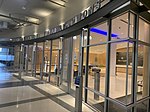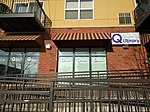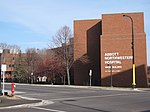Midtown Exchange
Adaptive reuse of industrial structuresArt Deco architecture in MinnesotaCommercial buildings on the National Register of Historic Places in MinnesotaDepartment stores on the National Register of Historic PlacesFood retailers ... and 3 more
Market hallsNational Register of Historic Places in MinneapolisSears Holdings buildings and structures

The Midtown Exchange is a historic structure and mixed-use building located in the Midtown neighborhood of Minneapolis, Minnesota, United States. It is the second-largest building in Minnesota in terms of leasable space, after the Mall of America. It was built in 1928 as a retail and mail-order catalog facility for Sears, which occupied it until 1994. It lay vacant until 2005, when it was transformed into multipurpose commercial space. The building is listed on the National Register of Historic Places as the Sears, Roebuck and Company Mail-Order Warehouse and Retail Store.
Excerpt from the Wikipedia article Midtown Exchange (License: CC BY-SA 3.0, Authors, Images).Midtown Exchange
Elliot Avenue South, Minneapolis
Geographical coordinates (GPS) Address External links Nearby Places Show on map
Geographical coordinates (GPS)
| Latitude | Longitude |
|---|---|
| N 44.949444444444 ° | E -93.260555555556 ° |
Address
Midtown Exchange
Elliot Avenue South
55407 Minneapolis
Minnesota, United States
Open on Google Maps







